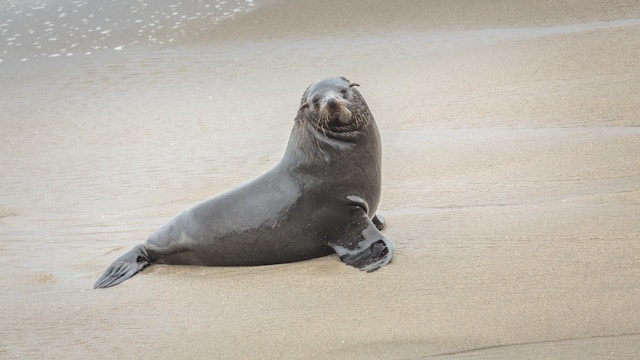Cape fur seals in South Africa’s Cape Town area are experiencing a significant rabies outbreak
In a startling turn of events along South Africa’s picturesque coastline, Cape fur seals, typically a playful sight for surfers, have become the centre of a public health concern due to a rabies outbreak. Gregg Oelofse, overseeing coastal management for Cape Town council, recounts a recent shift in seal behaviour that has upended local interactions with these marine mammals. What were once cherished encounters in the surf now evoke fear, as seals have exhibited unusually aggressive behaviour, including biting multiple surfers in rapid succession and displaying severe facial injuries indicative of heightened aggression.
The escalation in seal aggression began to emerge prominently in late 2021, prompting collaborative efforts among local authorities, marine scientists from the University of Pretoria, and animal welfare organizations such as Sea Search and the SPCA. These groups joined forces to investigate the underlying causes behind the unusual behaviour observed among Cape fur seals, initially dismissing rabies as a potential cause due to its historical rarity in marine mammals. However, recent events have overturned these assumptions.
Embed from Getty ImagesAuthorities took decisive action after several seals bit surfers within minutes during surfing sessions. In response, four seals were euthanized and their bodies sent for rabies testing, revealing three positive cases. Subsequent monitoring efforts have identified a total of nine rabies-positive seals, marking the first significant outbreak of the disease among marine mammals worldwide.
Dr. Greg Hofmeyr, a seasoned marine biologist with over three decades of experience studying seals, underscores the densely populated offshore colonies where seals congregate, highlighting territorial disputes as potential catalysts for disease transmission. Rabies, primarily transmitted through saliva, poses concerns regarding its potential spread among seal populations and the possibility of jumping to other coastal mammals, including Cape clawless otters.
Public health advisories now urge vigilance among beachgoers and surfers, emphasizing immediate medical attention for anyone bitten by a seal. Rabies, with its variable incubation period ranging from weeks to years, necessitates swift medical intervention to prevent human infections. Lifeguards and shark spotters have been instructed to close beaches upon sighting aggressive seals, while the public is encouraged to report any abnormal seal behavior to authorities.
Despite the heightened alert, Oelofse stresses a balanced approach in dealing with seal encounters, advising caution without undue panic. Reports indicate multiple seal bites among humans, yet thankfully, no human infections have been confirmed thus far. Nevertheless, ongoing research into the outbreak’s origins and transmission dynamics remains critical to understanding and mitigating its impact on both human and seal populations.
Analysis:
Political: The rabies outbreak among seals in South Africa intersects with political dimensions concerning wildlife management and public health policy. Local authorities must navigate public safety concerns alongside conservation efforts, balancing the need for proactive disease management with preserving marine biodiversity. The incident underscores the importance of robust policy frameworks that integrate ecological health with community welfare, highlighting the role of governmental agencies in responding to emerging wildlife-related health threats.
Social: Socially, the seal rabies outbreak reflects shifting human-wildlife dynamics and perceptions. Once beloved for their playful presence in coastal waters, seals now evoke fear and caution among surfers and beachgoers. This transformation in public sentiment underscores broader debates about human-wildlife coexistence and the ethical considerations of managing wildlife populations amidst public health risks. It prompts discussions on how communities perceive and interact with wildlife, advocating for informed and precautionary approaches to mitigate conflicts and ensure public safety.
Racial: The racial dimension in this context may not be directly applicable as the issue primarily revolves around public health, wildlife management, and community safety rather than race-specific impacts.
Gender: Similarly, gender-related impacts are not explicitly central to the seal rabies outbreak. The event’s significance lies more in its ecological and public health ramifications rather than gender-specific considerations.
Economic: Economically, the outbreak could affect coastal tourism and recreational industries dependent on seal-watching and marine activities. Beach closures and safety advisories may deter tourists and impact local businesses reliant on visitor engagement. Consequently, there is a need for adaptive management strategies that balance economic sustainability with safeguarding public health and ecological integrity.
